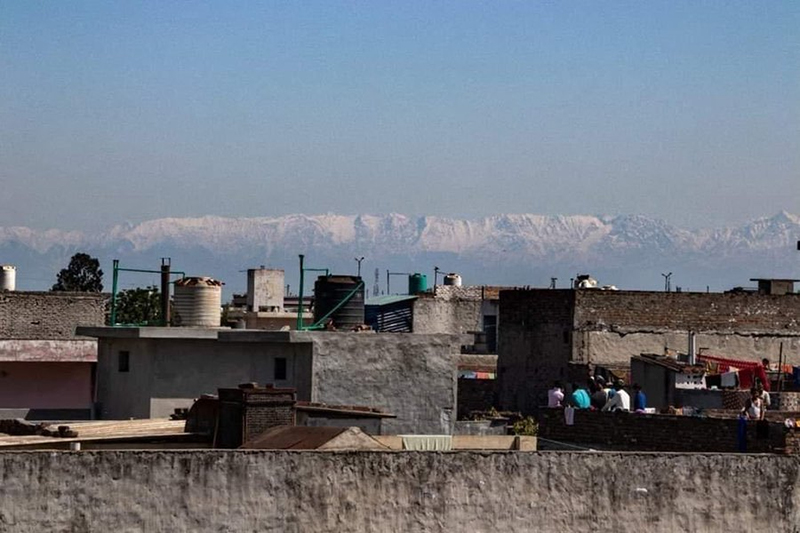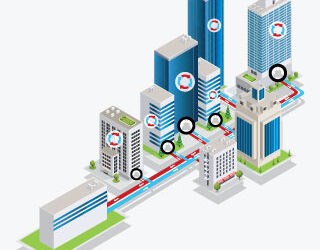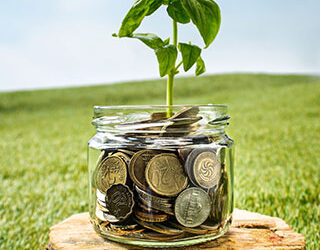Our final call to restore environmental balance

The relationship between human beings and nature has been striving for balance for decades. We have pressured the natural world, with damaging consequences, for generations; we took too much without giving anything back. Ever since the industrial revolution, fossil fuels set us on a course of expanding our production, which also meant more pollution and waste. While leading and developing economies metered their growth through their GDPs, something else paid the price- nature. The year 2019 saw an average temperature increase of 1.05 degree Celsius, as compared to the pre-industrial level. Our development at this rate is alarming for the environment!
The global COVID-19 crisis has been a wake-up call for all humanity. After all, it took several stay-at-home orders, curfews, and lockdowns to finally be able to witness nature the way it was meant to be-in harmony! As we put our lives on pause, remarkable things changed in the natural world- clearer air, cleaner waters, and wildlife starting to flourish in ways we have not seen for decades. Nature’s extraordinary response to the pandemic has, in many ways, conveyed the need for us to reflect, reciprocate, and never repeat our mistakes.
From endangered species having a record-breaking breeding season to animal parents finally being able to fend for and raise their offspring at a success rate never recorded before, it is safe to say that nature claimed its space in its wondrous ways in the absence of humans. With global business operations coming at a standstill in many parts of the world, tourism suffered, giving the sea world and wildlife in jungles a second chance at enjoying what was also supposed to be their home. Across some of the major cities globally, footfall reduced significantly leading to a staggering drop in air pollution levels. Within days of the lockdown, levels of toxic gases in China halved, Los Angeles experienced the cleanest air quality in 40 years, and India, which suffers from poor air quality through most of the year, witnessed something miraculous- the highest mountain range of the Himalayas, covered beneath blankets of smog for nearly 30 years, became vividly visible!
 The Himalayas show up as the planet heals during the COVID-19 pandemic in India
The Himalayas show up as the planet heals during the COVID-19 pandemic in India
(Source: globalnews.ca)
It was evident, the earth was breathing again!
The global climate crisis has presented us with warnings to know and act better in the form of dire consequences. Rising temperatures have worsened extreme weather events, wildfire seasons are months longer, the coral reefs have been bleached, and heavy chunks of ice in the Antarctic are breaking apart. Human activity is releasing billions of tons of CO2 into the atmosphere every year as a result of coal, oil, and gas production. According to the Emissions Gap Report 2020, Global GHG emissions continued to grow for the third consecutive year in 2019, reaching a record high of 52.4 Gigatonne carbon equivalent (GtCO2e) (range: ±5.2) without land-use change (LUC) emissions and 59.1 GtCO2e (range: ±5.9) when including LUC. G20 countries have fared poorly in transitioning towards low-carbon energy; over the last decade, the top four emitters (China, the United States of America, EU27+UK, and India) have contributed to 55 percent of the total GHG emissions without LUC.
But, there is a silver lining; COVID-19 witnessed the biggest fall in demand for energy since World War II. The pandemic-driven economic slowdown is expected to cause a drop of up to 7 percent in CO2 emissions. While this will have a significant impact on the Paris Agreement goal of limiting global warming to go below 2 degree Celsius, it will not last for long. Countries globally need to push for a green recovery, incorporating strong decarbonisation, to make a stronger impact in emissions reductions by 2030. To make noticeable progress in realising the Paris Agreement temperature goal by 2030, we need to invest in long-term solutions aligning with the Paris Agreement and make new and updated NDCs (Nationally Determined Contributions) consistent with the net-zero emissions goals. There is a need for current policy frameworks to address emissions and bridge the gap between current trajectories and our 2030 goals. Additionally, there is a dire need for lifestyle changes to sustain reductions in GHG emissions. Nearly two-thirds of global emissions stem from private household activities.
Our actions today decide what our tomorrow will be like. Now is the time to act- to address critical issues that the Earth faces today, to #RestoreOurEarth. This Earth Day, let us strive towards strengthening green technologies and fostering innovative thinking that can restore the world’s ecosystems.
This blog is written by Radhika Israni
Radhika Israni is a Communications Officer in the Communications and Marketing vertical at AEEE. Her expertise lies in digital campaigns, social media, and weaving content into meaningful and interesting narratives.




